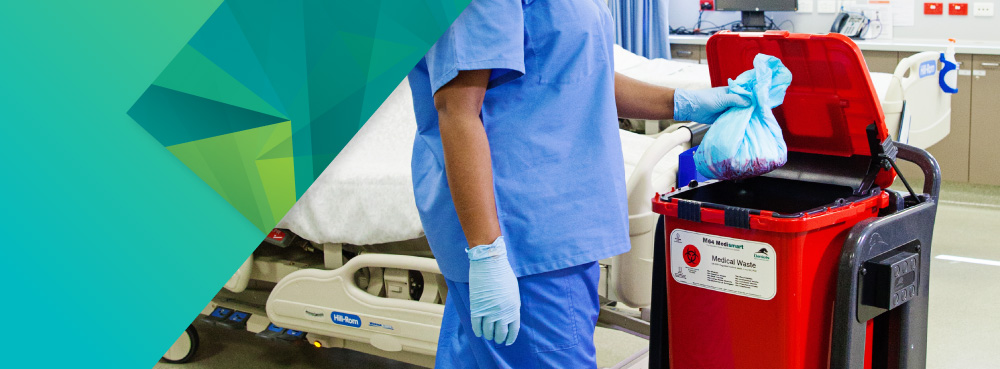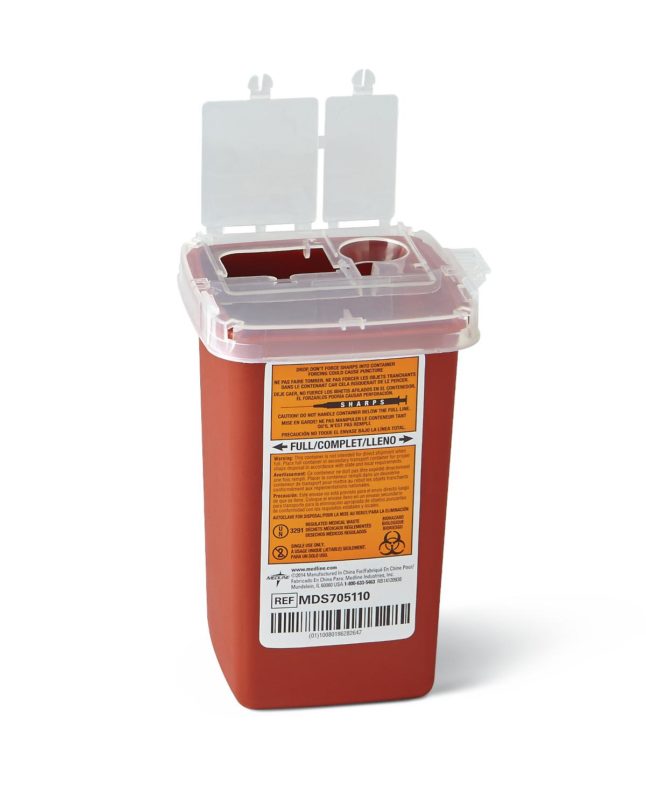Your Trusted Companion: Medical Waste Removal Services Tailored to Your Needs
Your Trusted Companion: Medical Waste Removal Services Tailored to Your Needs
Blog Article
Stay Ahead of Laws: Expert Guidance on Medical Garbage Disposal
In a globe where the healthcare market is regularly evolving, it is crucial for clinical centers to stay ahead of policies when it pertains to the correct disposal of clinical waste. With rigorous standards and frequent regulatory changes, it can be challenging to navigate the complexities of this process. Nevertheless, with skilled recommendations, centers can make certain conformity and mitigate risks related to improper waste disposal. From comprehending the various classifications of medical waste to executing the best collection and segregation methods, this discussion will offer workable pointers and useful understandings to help facilities stay ahead of laws in the ever-changing landscape of clinical garbage disposal.
Understanding Clinical Waste Categories
Comprehending clinical waste groups is vital for proper disposal and monitoring in health care centers. Medical waste refers to any kind of waste produced by medical care activities that might position a hazard to public health and wellness or the environment. It is vital to categorize clinical waste precisely to guarantee its safe handling, therapy, disposal, and transportation.
There are numerous categories of clinical waste that medical care facilities need to be aware of. One of the most common classifications consist of contagious waste, pathological waste, sharps waste, pharmaceutical waste, and chemical waste. Each classification has details guidelines and policies for its appropriate monitoring and disposal.
Infectious waste includes products infected with blood or various other bodily fluids, such as gloves, dress, and research laboratory societies. Pathological waste refers to human tissues, organs, or body parts that need special delivery and disposal. Sharps waste consists of made use of needles, syringes, and other sharp objects that can trigger injury and transfer infections. Drug waste consists of run out, extra, or contaminated drugs that need cautious handling and disposal. Chemical waste includes solvents, disinfectants, and other chemical compounds utilized in health care facilities.
Staying Up-To-Date With Regulatory Modifications
Staying existing with regulatory changes is critical for medical care centers to make sure conformity and correct monitoring of clinical garbage disposal. medical waste removal near me. With regulations constantly developing, it is necessary for health care facilities to remain current to avoid penalties, fines, and possible injury to the environment and public health
To stay ahead of regulative adjustments, medical care facilities need to establish a system for surveillance and monitoring updates. This can be done by signing up for regulative e-newsletters, participating in workshops and meetings, and actively getting involved in market associations. In addition, facilities need to assign a personnel or team in charge of staying educated and distributing details to appropriate stakeholders.
Regular interaction with regulatory companies is also crucial. Healthcare centers should develop connections with neighborhood, state, and federal companies to ensure they are mindful of any type of changes in guidelines that may impact their waste monitoring techniques. This can be done through normal meetings, participation in public comment durations, and positive interaction with regulatory agencies.
Additionally, health care centers need to think about partnering with waste management business that focus on medical waste disposal (medical waste disposal services with WasteX). These business are usually well-versed in the most up to date laws and can supply guidance and support to make sure conformity
Executing Appropriate Collection and Partition Approaches
To efficiently handle clinical waste disposal, healthcare facilities need to develop correct collection and segregation approaches according to regulatory standards. Implementing these methods ensures the risk-free handling and disposal of possibly harmful materials, protects the environment, and minimizes the risk of injuries and infections to healthcare workers and the general public.
Proper collection and segregation approaches entail using assigned containers and identifying systems. Health care facilities should provide plainly identified containers for different types of medical waste, such as sharps, transmittable waste, pharmaceutical waste, and non-hazardous waste. These containers need to be color-coded and plainly marked to avoid complication and promote easy recognition.
In addition, health care facilities should educate their personnel on the appropriate treatments for accumulating and segregating medical waste. This consists of informing them on the different kinds of waste, the proper containers to utilize, and the significance of adhering to laws and standards. Regular training sessions and refresher course programs should be performed to guarantee that personnel remain updated on try this out best techniques.
Additionally, healthcare centers ought to develop a system for regular collection and disposal of clinical waste. This may entail partnering with certified waste monitoring companies that concentrate on medical garbage disposal. These companies will make certain that the gathered waste is transported and disposed of in compliance with governing requirements.
Selecting the Right Disposal Approaches

Incineration is one of the most efficient and usual approaches for dealing with specific sorts of clinical waste, such as pathological waste and sharps. It includes the regulated combustion of waste at high temperature levels, minimizing it to ash. Nonetheless, incineration can launch harmful pollutants into the air and add to air pollution.

Chemical therapy entails the usage of chemicals to sanitize and neutralize the waste. Microwave therapy utilizes microwave power to warmth and decontaminate the waste.
Ensuring Compliance Through Documentation and Training
After thoroughly taking into consideration the ideal disposal approaches for clinical waste, medical care centers have to make certain conformity with laws and decrease ecological influence by applying reliable documents and training treatments. This action is crucial in maintaining a safe and sustainable setting for both medical care employees and the basic public.

Healthcare workers who handle clinical waste should receive ideal training on waste segregation, managing, and disposal procedures. By supplying comprehensive training, medical care facilities can encourage their personnel to make enlightened decisions and minimize the danger of improper waste disposal.
Conclusion
In final thought, staying ahead of guidelines in medical waste disposal is important for healthcare facilities. medical waste removal service. Comprehending the different classifications of medical waste, staying updated with governing modifications, executing correct collection and partition techniques, picking the ideal disposal methods, and ensuring compliance through documents and training are all important steps. By complying with these standards, healthcare companies can successfully manage and dispose of clinical waste in a risk-free and accountable fashion
From understanding the different categories of medical waste to implementing the best collection and partition approaches, this discussion will provide workable pointers and beneficial insights to assist centers stay in advance of guidelines in the ever-changing landscape of medical waste disposal. - medical waste disposal services with WasteX
The most typical groups consist of contagious waste, pathological waste, sharps waste, pharmaceutical waste, and chemical waste. Healthcare centers ought to give plainly classified containers for different types of clinical waste, such as sharps, transmittable waste, pharmaceutical waste, and non-hazardous waste. Healthcare centers ought to develop a thorough system to tape and track all facets of clinical waste disposal, consisting of types of waste generated, amounts, and disposal methods utilized. Medical care employees that manage medical waste should get ideal training on waste segregation, dealing with, and disposal treatments.
Report this page